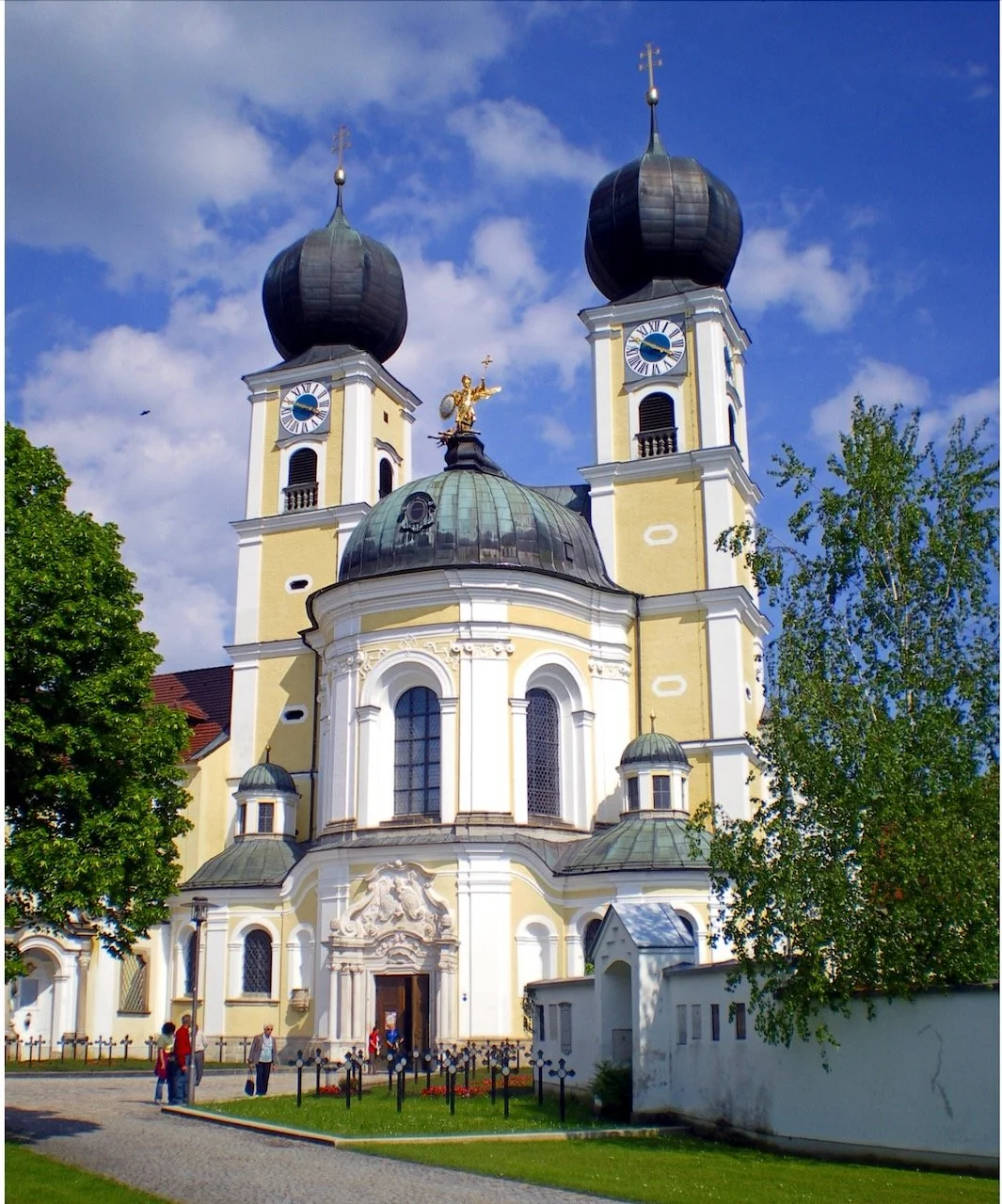Announcing Opus 6
Saint John’s Abbey Organ Builders is pleased to announce the signing of a contract with St. Benedict’s Abbey in Atchison, Kansas, for a pipe organ of 60 stops over four manuals and pedal, to be completed in 2032. St. Benedict’s Abbey is a member of the American-Cassinese Congregation of the Order of Saint Benedict, and like Saint John’s Abbey, was founded nearly 175 years ago by monks from St. Vincent Archabbey in Latrobe, Pennsylvania.
The commission and creation of a landmark pipe organ offers a special opportunity to celebrate the kinship between our two abbeys and to foster the sacred arts at the heart of our common patrimony. The new organ for St. Benedict’s Abbey Church will be of a scope and quality worthy of the praise of God and the sanctification of the faithful. It will also support the needs of the academic program in Catholic sacred music at Benedictine College.
St. Benedict’s Abbey Church, completed in 1957
The design and construction of this new organ will aim toward strong integration with the architecture of the Abbey church and the principles espoused by its architect Barry Byrne: that geometry and outward form should emerge from internal function.
The organ’s physical layout builds upon the scheme of the original Möller instrument and the vision of Fr. Blaine Schultz, OSB, abbey choirmaster from 1968 to 2017. Two expressive choir divisions (Südchor Werk and Nordchor Werk) will be placed at the front of the existing organ chambers flanking the sanctuary (altar area). These divisions will be voiced to accompany the monastic choir and to support the sacred rites at the altar, while also providing the tonal flexibility required to accompany collegiate choral concerts.
We have also proposed that the main divisions of the organ be installed on the West wall of the nave, a traditional and acoustically advantageous position. These divisions (Haupt Werk, Ober Werk, and Haupt Pedal) will form the musical core of the organ when the organ is serving as an independent “cosmic” voice in the liturgy. They will also help lead the assembly in sung prayer and enhance the dialogical and antiphonal dimensions of the sacred rites.
The divisions in the West gallery will use a sensitive mechanical (“tracker”) key action, while the sanctuary divisions will be operated via electric key action, with pipes on traditional slider windchests. All divisions will be playable from a four-manual key desk in the West gallery as well as a low-profile four-manual console in the monastic choir.
Metten Abbey
Tonally, the organ will follow our house style inherited from Pasi Organ Builders, a style rooted in a Dutch-Flemish “proto-style” from which arose the major national styles of European organ building. These styles found Catholic expressions over four centuries in France, Spain, Italy, and the German-speaking lands of the Hapsburg Empire. In the 18th and 19th centuries, organs of central Europe sought to synthesize elements of these national styles, a fusion exemplified in Benedictine Abbey organs across Alsace, Switzerland, Bavaria, Swabia, and Austria.
The more romantic aspects of the new St. Benedict’s Abbey organ come from the 19th century, evoking the moment when Benedictine monks of Metten Abbey set out from Bavaria for their mission in the New World. Led by their pioneering spirit, we seek to unite the finest elements of a rich and varied tradition in a new instrument for St. Benedict’s Abbey, a singular voice that will resonate with the architectural language of the Abbey church and express the living faith of the monastic and academic community it serves.



